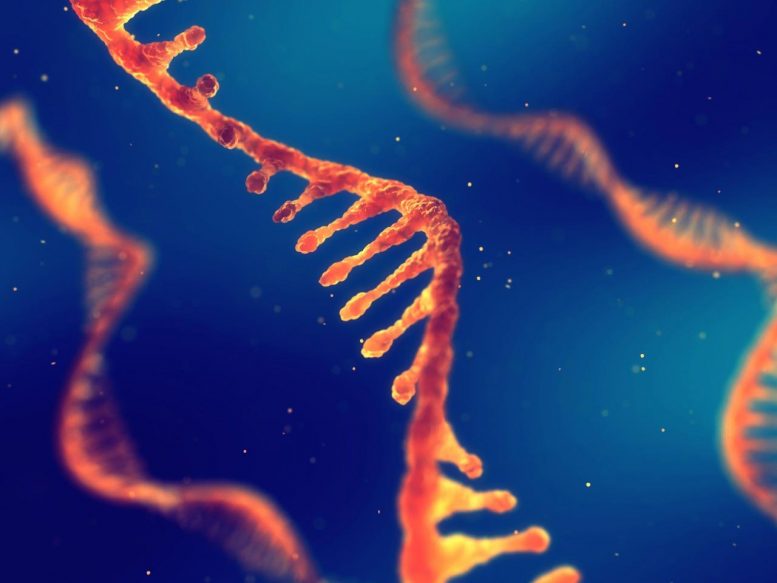
CSIRO researchers are studying SARS-CoV-2, which has a single-stranded RNA genome, to understand how the virus evolves. Credit: CSIRO
Data visualization helping researchers ‘see’ mutating virus as the race for a vaccine continues.
Researchers from CSIRO, Australia’s national science agency, have unveiled a new approach to analyzing the genetic codes — or the blueprint — of the SARS-CoV-2 virus that causes COVID-19.
The findings will help researchers better understand how strains of the virus evolve and help identify new clusters of the virus.
Analyzing global data on the published genome sequences of this novel coronavirus will help fast-track our understanding of this complex disease.
The researchers developed a novel visualization platform, underpinned by bioinformatics algorithms originally used to analyze the human genome, to pinpoint differences among the thousands of genetic sequences of the SARS-CoV-2 virus.
CSIRO Chief Executive Dr. Larry Marshall said knowing the genetic code was vital.
“The more we know about this virus, the better armed we’ll be to fight it,” Dr. Marshall said.
“This highly complex analysis of the genome sequence of the SARS-CoV-2 virus has already helped to determine which strains of the virus are suitable for testing vaccines underway at the Australian Centre for Disease Preparedness in Geelong — the only high biocontainment facility of its kind in the Southern Hemisphere.”
CSIRO’s Bioinformatics Team Leader Dr. Denis Bauer said as the virus evolves, this blueprint becomes increasingly important, effective because it holds instructions about the behavior of the virus and what kind of disease it can cause.
“Globally there is now a huge amount of individual virus sequences,” said Dr. Bauer, who is also Honorary Associate Professor at Macquarie University, Australia.
“Assessing the evolutionary distance between these data points and visualizing it helps researchers find out about the different strains of the virus — including where they came from and how they continue to evolve.”
CSIRO’s Dangerous Pathogens Team Leader Professor S.S. Vasan, who is leading the SARS-CoV-2 virus work and vaccine evaluation studies and is the corresponding author of the paper, said the first 181 published genome sequences from the current COVID-19 outbreak were analyzed to understand how changes in the virus could affect its behavior and impact.
“This RNA virus is expected to evolve into a number of distinct clusters that share mutations, which is what we have confirmed and visualized,” said Professor Vasan, who holds an honorary chair at the University of York, UK.
“At this time, we do not expect it will affect the development and evaluation of COVID-19 vaccines, therapies, and diagnostics, but it is important information to monitor as preclinical and clinical studies progress.
“To enable this, we are calling on the international research community to share de-identified details of case severity and outcome, and other relevant meta-data such as co-morbidities and smoking status, alongside the genomic sequences of the virus.”
CSIRO’s Australian e-Health Research Centre CEO David Hansen said the work shows the importance of cross-collaboration between the established and emerging disciplines of bioinformatics, genomics, vaccinology, and virology.
“Following the scientific process of peer-reviewed open publication such as this one is a vitally critical component of the CSIRO’s response.” Dr. Hansen said.
“The advantage of the data visualization platform is that it highlights evolving genetic mutations of the virus as it continues to change and adapt to new environments,” said Dr. Bauer, who is the first author of this paper.
“The more informed we are about the genetic differences and their likely consequences on the progression of the disease, the better we can tackle the disease with diagnostics and treatments.”
Reference: “Supporting pandemic response using genomics and bioinformatics: a case study on the emergent SARS-CoV-2 outbreak” by Denis C. Bauer, Aidan P. Tay, Laurence O.W. Wilson, Daniel Reti, Cameron Hosking, Alexander J. McAuley, Elizabeth Pharo, Shawn Todd, Vicky Stevens, Matthew J. Neave, Mary Tachedjian, Trevor W. Drew and S.S. Vasan, 20 April 2020, Transboundary and Emerging Diseases.
DOI: 10.1111/tbed.13588

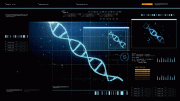
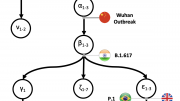




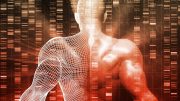
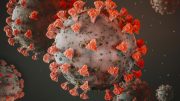
Be the first to comment on "New Way Unlocked to Understand Evolving Genetic Strains of SARS-CoV-2, Virus That Causes COVID-19"